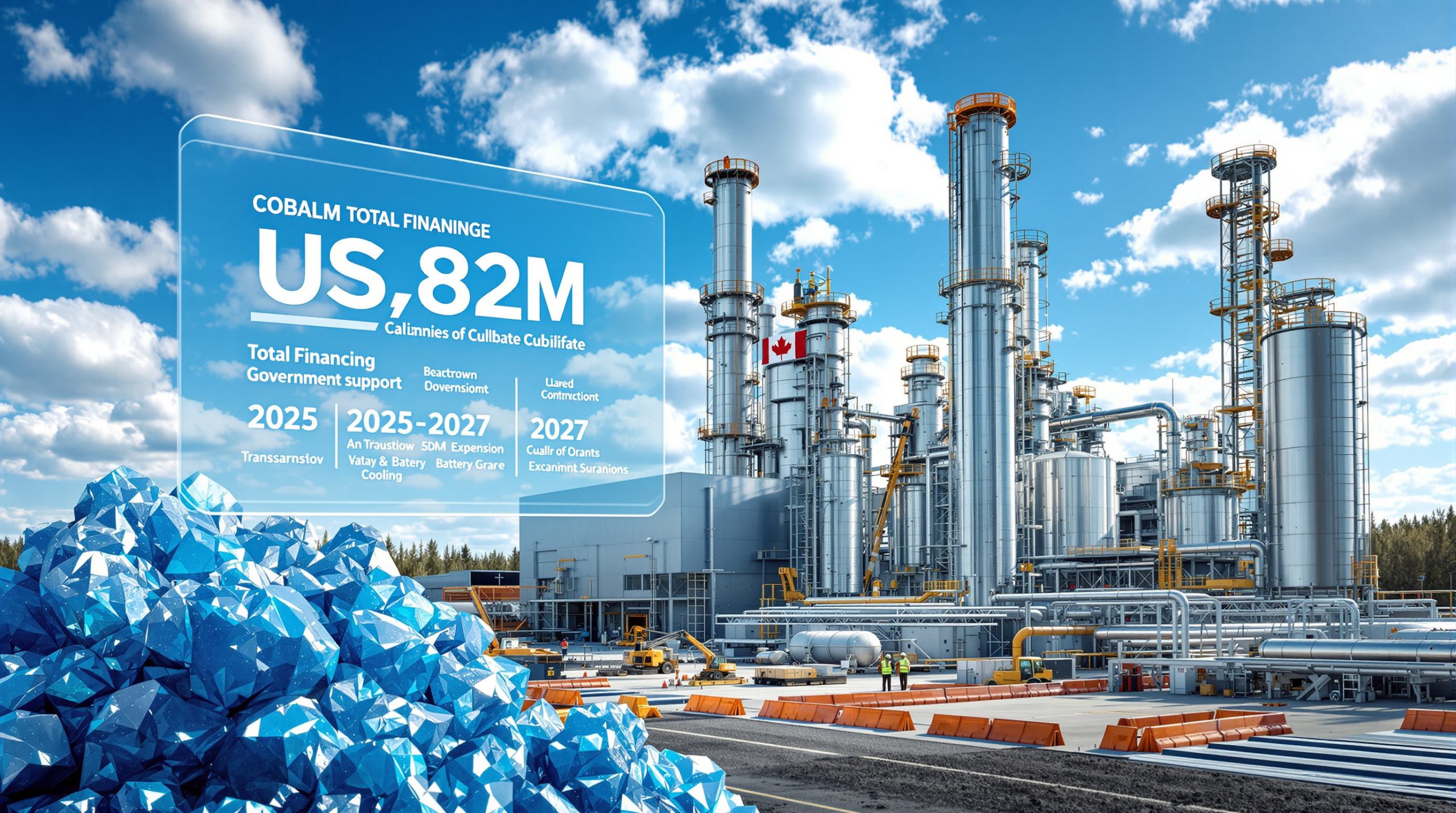What is the Copper Supply Gap and Why Does it Matter?
The global copper supply is facing an unprecedented challenge as demand continues to outpace production capabilities. Chile, as the world's largest copper producer, supplying approximately 25% of global copper, sits at the center of this dilemma. The supply gap represents the growing disparity between projected copper demand and available supply—a critical issue for industries worldwide.
Understanding the Looming Copper Deficit
By 2040, copper demand is projected to require the equivalent of 80 Los Bronces mines. For context, Los Bronces produced 172,000 metric tons in 2024, meaning the world will need an additional 13.76 million metric tons annually to meet future demand. This staggering figure highlights the scale of the challenge facing the mining industry.
The supply gap is driven by three interconnected factors. First, the global energy transition requires enormous quantities of copper for renewable infrastructure. Wind turbines use up to 4.7 tons of copper per megawatt, while electric vehicles require approximately 83kg per vehicle—four times that of conventional vehicles.
Second, rapid industrialization in emerging economies continues to drive demand. Countries across Asia and Africa are expanding their electrical grids and construction sectors, both copper-intensive activities.
Third, increasing digitalization worldwide demands copper for everything from data centers to telecommunications infrastructure. The average smartphone contains about 15 grams of copper, and with billions of devices being produced annually, this creates significant cumulative demand.
The Strategic Importance of Chilean Copper
Chile's dominant position in global copper market makes its permitting processes a matter of international concern. The country's copper reserves account for approximately 23% of the world's known deposits, dwarfing Peru (10%) and the Democratic Republic of Congo (8%).
Copper's role as a critical mineral for the energy transition cannot be overstated. The International Energy Agency estimates that achieving net-zero emissions will require quadrupling mineral demand for clean energy technologies by 2040, with copper being among the most crucial.
As Anglo American Chile CEO Patricio Hidalgo emphasized, "We need much more agility to bring copper to the market." This statement reflects the growing recognition among industry leaders that permitting delays directly threaten global decarbonization efforts.
Supply constraints could significantly hinder climate goals as renewable energy installations, electric vehicle production, and grid upgrades all depend on reliable copper supplies. The World Bank projects that production of minerals like copper would need to increase by nearly 500% by 2050 to meet clean energy demands—an impossible target without streamlined permitting and increased production capacity.
How is Chile's Current Permitting Process Affecting Copper Production?
Chile's permitting system, once considered a model of stability in Latin America, has become increasingly complex and time-consuming, creating significant bottlenecks for copper production expansion.
Challenges in the Existing System
Mining companies across Chile have consistently voiced concerns about permitting delays that hamper their ability to expand operations or develop new projects. Chile's Environmental Assessment Service (SEA) currently averages 24-36 months for mine approvals—significantly longer than the 12-18 months typical in mining jurisdictions like Canada.
These extended timelines create a critical mismatch between approval processes and market demands. As copper prices rise in response to supply constraints, mining companies face frustrating delays in bringing new production online. A 2024 industry survey revealed that 78% of miners cite "regulatory delays" as the top barrier to expansion in Chile.
The regulatory landscape involves multiple agencies with overlapping jurisdictions, creating a complex web of approvals. Projects typically require separate assessments for environmental impacts, water usage, community consultation, and technical feasibility—each with its own timeline and requirements.
The Economic Impact of Permitting Delays
The economic consequences of these delays extend far beyond individual mining companies. According to industry analysis, delayed projects in Chile represent over 2.5 million tons of potential annual copper production—equivalent to approximately 12% of current global supply.
Codelco's Chuquicamata Underground project exemplifies these challenges. The conversion of this historic open-pit mine to underground operations faced a two-year delay due to permit revisions, postponing 300,000 tons of annual production and costing the Chilean economy an estimated $1.8 billion in export revenues.
These inefficiencies affect Chile's competitiveness in the global mining sector. The Fraser Institute's Annual Survey of Mining Companies shows Chile slipping in investment attractiveness rankings, with regulatory uncertainty cited as a primary concern. In a capital-intensive industry where investment decisions are made years in advance, regulatory unpredictability can redirect billions in potential investment to competing jurisdictions.
As mining companies evaluate global opportunities, capital increasingly flows to jurisdictions with more streamlined approval processes. Australia and Canada have gained market share in mining investment, with both countries implementing reforms to enhance permitting efficiency while maintaining environmental standards.
What Reforms Are Being Proposed for Chile's Mining Permits?
Chile's government has recognized the urgent need for permitting reform to maintain the country's position as a leading copper producer while meeting rising global demand.
President Boric's Permitting Initiative
Chilean President Gabriel Boric has pledged to reduce permitting timelines by one-third—a significant commitment from a leader initially viewed with caution by the mining industry. This target would cut approval times from the current average of three years to approximately two years by 2026.
Chilean Mining Minister Marcelo Álvarez has emphasized the administration's practical approach: "We're prioritizing interagency coordination to eliminate redundancy." This signals a shift toward process efficiency rather than regulatory relaxation.
A reform bill aimed at streamlining the process is currently under debate in Congress, with bipartisan support suggesting possible passage in late 2024. The initiative represents a significant potential shift in Chile's approach to mining regulation—balancing environmental protection with economic development needs.
Key Elements of the Proposed Reforms
The reform package includes several concrete measures to accelerate permitting without compromising environmental standards. First, simplified application procedures would establish standardized formats and data requirements, reducing resubmissions due to administrative errors.
Second, the bill proposes reducing bureaucratic layers through a single-window digital platform for permit applications. A pilot program in the Antofagasta Region has already demonstrated promising results, reducing permit times by 22% in 2024.
Third, the reforms would establish more transparent timelines for project evaluations. Each stage of the review process would have mandatory deadlines, providing investors with greater certainty for project planning.
Finally, enhanced coordination between different regulatory agencies would eliminate redundant reviews. The Environmental Assessment Service would serve as the lead agency, coordinating input from water authorities, mining regulators, and indigenous affairs offices.
Opposition from environmental groups centers on concerns that accelerated timelines might dilute ecological protections. However, proponents argue that more efficient processes can maintain standards while eliminating unnecessary delays.
How Can Infrastructure Sharing Accelerate Copper Production?
Beyond regulatory reforms, innovative operational approaches like infrastructure sharing present immediate opportunities to increase copper production using existing permits and facilities.
The Anglo American-Codelco Partnership Model
Anglo American recently agreed to share infrastructure at Los Bronces with the neighboring Andina mine owned by state copper giant Codelco. This groundbreaking collaboration aims to increase production by 120,000 metric tons annually—equivalent to a medium-sized new mine coming online.
The partnership leverages shared rail and water infrastructure, saving an estimated $500 million in capital costs compared to developing separate systems. Anglo American Chile CEO Patricio Hidalgo highlighted the broader potential: "The Andean corridor has $2 billion in untapped synergy potential."
This model demonstrates how competing companies can collaborate to overcome physical constraints in Chile's mining districts. The Los Bronces-Andina agreement took advantage of geographic proximity to optimize mineral processing and transportation.
Benefits of Mining Infrastructure Collaboration
Infrastructure sharing delivers multiple advantages beyond the obvious production increases. First, it dramatically reduces capital expenditure requirements for expansion projects. By leveraging existing processing facilities, companies can deploy capital more efficiently, improving project economics even at lower copper prices.
Second, these partnerships enable more efficient use of existing processing facilities and transportation networks. Many Chilean copper operations run below maximum throughput capacity due to ore supply constraints. By pooling resources, companies can optimize capacity utilization across multiple assets.
Third, shared infrastructure creates a significantly lower environmental footprint compared to developing entirely new mining complexes. BHP's Chilean investment strategy includes shared desalination plants serving multiple mines, reducing individual water consumption and associated environmental impacts. Shared tailings management facilities can reduce freshwater use by approximately 15% in collaborative projects.
Finally, these arrangements deliver faster time-to-market for additional copper production. Traditional greenfield developments typically require 7-10 years from discovery to production. Infrastructure sharing can cut this timeline in half by eliminating the need for separate permit applications and construction schedules.
As Freeport-McMoRan CEO Kathleen Quirk noted, "We need to do more of those types of deals" to address the supply gap efficiently.
What Are Mining Companies Saying About Permit Reform?
Mining executives have become increasingly vocal about the connection between permitting efficiency and meeting future copper demand, providing valuable insights into industry priorities.
Industry Perspectives on Regulatory Changes
Anglo American Chile CEO Patricio Hidalgo has emphasized the need for "much more agility to bring copper to the market," highlighting how current timelines jeopardize supply chain security for critical minerals. This sentiment reflects growing industry concern about meeting contractual obligations to downstream customers in renewable energy and electric vehicle sectors.
A recent CRU survey revealed that 63% of mining executives rank Chile as "high risk" due to permitting uncertainty. This perception affects investment decisions across the copper supply chain, from exploration budgets to expansion plans.
Antofagasta PLC CEO Iván Arriagada offers a nuanced perspective: "Reforms must balance speed with community consent." This reflects the industry's evolving approach, recognizing that sustainable mining requires both regulatory efficiency and social license to operate.
Mining companies are also investing in technological solutions to navigate permitting challenges. Rio Tinto copper strategy includes AI-driven permit application systems that reduced errors by 40% in pilot trials, demonstrating how digital innovation can complement regulatory reforms.
The Role of Public-Private Collaboration
Successful permit reform requires coordination between government agencies and mining companies to identify bottlenecks and implement practical solutions. The Chilean Mining Council has established a working group with the Environmental Assessment Service to develop industry best practices for permit applications.
Industry expertise can help identify specific bottlenecks in the current process. Companies like Barrick Gold have demonstrated how pre-submission consultations cut approval time by 30% at their Pueblo Viejo operation in the Dominican Republic—a model that could be adapted for Chile.
The International Council on Mining and Metals (ICMM) has developed 2024 guidelines for sustainable permitting practices, providing a framework for balancing efficiency with environmental protection. These industry-led standards create benchmarks for both companies and regulators.
Public-private collaboration extends to community engagement, where mining companies increasingly recognize that early, transparent consultation reduces permitting friction. Collaborative approaches between government agencies and mining companies can balance environmental protection with production needs, particularly in water-scarce regions where resource competition creates tensions.
What Would Faster Permitting Mean for Global Copper Supply?
Accelerated permitting in Chile would have far-reaching implications for global copper markets, potentially alleviating supply constraints that threaten economic growth and climate targets.
Potential Production Increases
Streamlined permitting could accelerate development of new mines and expansion of existing operations throughout Chile. Industry analysts estimate that approximately 3.5 million tons of annual copper production is currently delayed in various stages of the Chilean permitting process.
Reduced approval timelines would allow more projects to reach production stage within critical timeframes for energy transition. Projects currently in advanced exploration or feasibility studies could enter production 1-2 years earlier under reformed permitting systems.
Chile could maintain or expand its 25% share of global copper production despite increasing competition from emerging mining regions. Without permitting reforms, Chile's market share could decline to approximately 18% by 2030 as production shifts to jurisdictions with more predictable regulatory environments.
The geographic concentration of Chile's copper resources along the Andean corridor creates natural opportunities for production synergies. Infrastructure sharing agreements could unlock an estimated 500,000 tons of additional annual production from existing operations without requiring extensive new permits.
Impact on Copper Markets and Pricing
More efficient permitting could help moderate future copper price volatility by creating greater certainty around supply additions. Copper has experienced price swings of over 30% in recent years, partly due to uncertainty about project timelines.
Improved supply certainty would benefit downstream industries reliant on copper, from electrical equipment manufacturers to construction firms. These sectors currently face challenges in long-term planning due to price uncertainty and supply risks.
Closing the supply gap would support global energy transition goals by ensuring adequate copper availability for renewable infrastructure. The International Energy Agency estimates that copper shortages could delay global clean energy transitions by 2-3 years, with corresponding impacts on carbon reduction targets.
Market analysts project that streamlined permitting in Chile could reduce projected copper deficits by approximately 20% by 2030, helping to prevent extreme price scenarios that would make electrification technologies less economically viable.
How Can Mining Companies Adapt While Waiting for Permit Reform?
While regulatory reforms progress through legislative channels, mining companies can implement strategies to navigate current challenges and optimize copper production.
Strategic Approaches to Navigate Current Challenges
Pursuing infrastructure sharing opportunities along the Andean corridor represents an immediate opportunity. Beyond the Anglo American-Codelco partnership, several mining districts in northern Chile have potential for similar arrangements, particularly in water management and transportation.
Optimizing existing operations to maximize production from current permits can deliver significant improvements. Digital twin technology has enabled some operations to increase throughput by 8-12% without requiring additional permitting approvals.
Engaging proactively with regulatory agencies to improve application quality reduces revision cycles and accelerates approvals. Companies that invest in comprehensive baseline studies and detailed engineering before submission typically experience 25-40% faster approvals.
Developing stronger community relationships to reduce project opposition is increasingly critical. Local objections account for approximately 30% of permitting delays in Chile. Early, transparent engagement with communities has been shown to reduce the likelihood of legal challenges that extend permitting timelines.
Technology and Innovation Solutions
Implementing more efficient extraction and processing technologies can increase copper recovery from existing operations. Enhanced flotation cells and high-pressure grinding rolls have improved recovery rates by 3-5% at several Chilean operations without requiring major permit modifications.
Utilizing digital tools to improve environmental monitoring and compliance provides regulators with greater confidence in a project's sustainability. Real-time monitoring systems for water usage, air quality, and tailings management demonstrate commitment to environmental standards.
Developing more sustainable mining practices may face fewer permitting hurdles, particularly regarding water usage. Dry stack tailings technology, though more expensive, typically receives faster approvals due to reduced water consumption and lower failure risks.
Investments in renewable energy for mining operations align with Chile's climate objectives and often receive expedited approvals. Several major mines have transitioned to solar power, reducing both carbon emissions and permitting complexity associated with fossil fuel infrastructure.
What Are the Environmental Considerations in Permit Reform?
Effective permitting reform must maintain robust environmental protections while eliminating inefficiencies that delay sustainable mining projects.
Balancing Efficiency and Protection
Streamlined permitting must maintain robust environmental safeguards to ensure the mining sector's long-term sustainability. Chile's environmental regulations have significantly improved mining practices over the past two decades, reducing impacts on sensitive ecosystems.
Reforms can focus on process efficiency without compromising ecological standards. Simultaneous rather than sequential reviews, standardized assessment methodologies, and clear decision criteria can reduce timelines while maintaining thorough evaluation of environmental impacts.
Modern monitoring technologies can enable faster approvals while ensuring compliance throughout a project's lifecycle. Satellite imagery, drone surveys, and continuous monitoring systems provide more comprehensive environmental data than traditional point-in-time assessments.
The climate imperative adds complexity to permitting decisions. While copper is essential for decarbonization technologies, its extraction requires balancing immediate environmental impacts against long-term climate benefits. This calculation increasingly factors into regulatory decisions.
Sustainability as a Permitting Advantage
Projects with strong environmental credentials may receive expedited approvals under reformed systems. Several jurisdictions have implemented "green lanes" for projects that exceed minimum environmental standards or contribute to climate goals.
Mining companies can integrate sustainability into project design from the outset, potentially reducing regulatory friction. Water-efficient processing, renewable energy usage, and biodiversity protection measures increasingly feature in initial project designs rather than as regulatory afterthoughts.
Community engagement and transparent environmental practices can reduce permitting friction by building trust with local stakeholders and regulatory authorities. Companies that establish credibility through responsible operations typically experience fewer delays in subsequent permit applications.
The copper industry's environmental performance has broader implications for Chile's export economy. As markets increasingly demand responsibly produced minerals, efficient permitting of sustainable projects serves both economic and environmental objectives.
FAQ: Chile's Copper Permitting and Supply Gap
How significant is the projected copper supply gap?
The gap is substantial—Anglo American Chile CEO Patricio Hidalgo estimates that by 2040, demand will require the equivalent of 80 Los Bronces mines. For context, Los Bronces produced 172,000 metric tons of copper in 2024. This translates to a potential shortfall of 13.76 million metric tons annually if production capacity doesn't expand significantly.
Why is Chile particularly important for global copper supply?
Chile currently supplies approximately 25% of the world's copper, making its permitting processes and production capacity critical to global supply stability. The
Want to Stay Ahead of the Next Major Mineral Discovery?
Discovery Alert's proprietary Discovery IQ model delivers real-time alerts on significant ASX mineral discoveries, transforming complex geological data into actionable investment insights. Explore why historic discoveries generate substantial returns by visiting Discovery Alert's dedicated discoveries page and position yourself ahead of the market.




